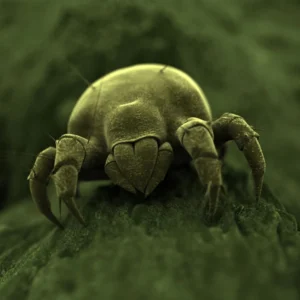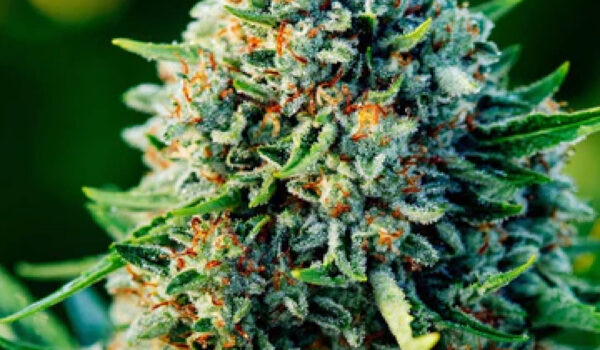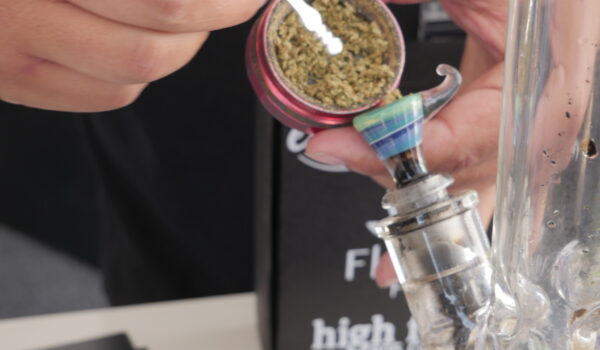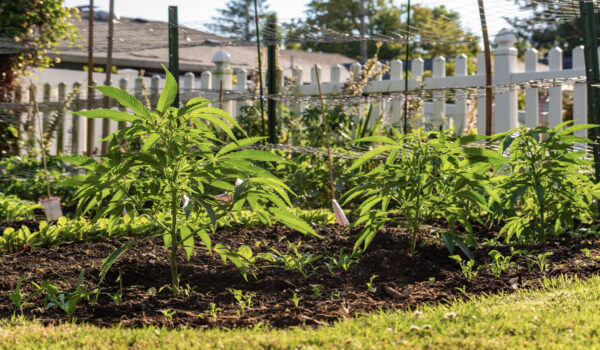Russet Mites (Aculops cannabicola)
By Rincon Vitova Insectary
Hemp russet mites are hard to control if they get started in the garden. Extremely high populations of mites may build in late summer which damage maturing buds/flowers and reduce yield and quality. They feed on foliage, including petioles, meristems and leaves. Russet mites feed on stigmas rendering them sterile. They also eat resin glands, which can diminish harvest potency.
Identification
The 0.2 mm-long mites have two pairs of legs in front.
The body is elongate, carrot or cigar shaped.
Mites are pale/beige in color, typical of most eriophyid mites (family Eriophyidae).
Life Cycle
At 80º F, russet mites have a 30-day life cycle.
Hemp russet mites are capable of surviving and reproducing year round on indoor cannabis crops in continuous culture.
Females over winter just inside stems of the plants they infest or where twigs are joined to stems.
Adults can crawl very short distances and immature stages are particularly immobile.
Adults move to the edge of leaves to be picked up and carried on air currents.
Indoors, fans can quickly spread mites.
Outdoors, small breezes can distribute mites through fields.
Monitoring
Russet mites are much smaller than the two spotted spider mite and individual mites cannot be observed without (15-20X) magnification.
A lack of webbing distinguishes russets from other mites.
Hemp Russet mites begin feeding on lower leaves and eventually work their way to the top of the plant, including flowers.
Slight upward curling along leaf edges is common, but not consistently produced and not on all cultivars.
Plants often have a general dullness of leaves (russetting).
As infestations progress small areas of leaves may have visible yellow or brown spotting.
Foliage also may become more brittle and may sometimes break at the leaf petiole.
Russet mites also develop on stems, which may cause stems to have a slight bronze/golden color.
Heavy infestations on developing flower buds may suppress bud growth and size.
Leaf edges curl yellow and die.
Heavy infestations: flowering structures look beige and is due to leaf injuries and beige mites in mass on the heads.
Cultural Practices
Sanitation! Clean grow space
Be mindful of clothing.
Sterilize potting soil mixes.
Quarantine clones or clippings.
Remove old and infected leaves
Remove weeds and other vegetation that could harbor mites.
Increase Relative Humidity: Russet mites breed faster in drier climates.
Insecticidal soaps and Neem oil are less effective
Dust with Diatomaceous Earth: these jagged particles cut the insects and expose to desiccation & disease. It will need to be reapplied as it gets wet. DE is not curative but will slow down the spread of the mites.
Sulfur sprays – don’t use sulfur unless it has been shown to be safe for that plant in your locality.
Russet Mites (Aculops cannabicola)
Use liquid products: sulfur and potash soap combinations (Safer Brand 3-in-1 Garden Spray) rather than sulfur dusts.
Sulfur dust/wettable Sulfur are not to be used on flowering plants!
Sulfur dust has better coverage but drifts easily and can be breathed in.
Thorough coverage is required; ground application is preferred.
Do not apply when temperatures are > 90°F
Do not apply during a heavy dew or fog.
Don’t apply sulfur within 30 days of an oil spray
Outdoors, Sulfur Dust and Wettable Sulfur will kill hemp russet mites during the vegetative growth phase
Sulfur is generally considered an Organic friendly substance, but don’t use it once the crop is flowering.
Indoors, use a stripe on the floor versus sulfur burner, (fumes are quite hazardous to humans).
Avoid using pesticides: Abamectin, Spirodiclofen, Diflubenzuron, Fenpyroximate
Mites exposed to carbaryl (Sevin) in the laboratory reproduce faster than untreated populations.
Carbaryl/some organophosphates/some pyrethroids favor spider mites by increasing levels of Nitrogen in leaves, which stimulates spider mites’ reproduction. These materials are highly toxic to natural enemies and pollinators
Can cause spider mites to become abundant and damage plants after its application. Insecticides applied during hot weather usually cause dramatic spider mite outbreaks within a few days.
Cinnamaldahyde, extracted from cinnamon also kills beneficial insects
Bio-Control: Predatory mites
Amblyseius andersoni: Red Mites, TSSM, Russet, Gall mites, often thrips
43°-104°F Needs High humidity
*Best for prevention
*May diapause in late summer
*Wide range of hosts & prey
*Will overwinter & be active in January
Neoseiulus californicus: Persea, Avocado-Brown, two-spotted spider mite, Pacific, Broad, Cyclamen, Eriophyid
55°-105°F 40%-80% RH
*Best in warm/humid conditions
*Tolerate hot/dry G.H.
*Susceptible to pesticides
*Eats other predatory mite eggs (especially Persimilis)
Galendromus occidentalis: Eriophyid mites. Two-spotted, pacific, willamette. All stages of spider mites Except European Red mite eggs. Also feed on small insects and pollen
50°-120°F 30%-60%
*Slightest starvation causes sterility
*Only use in G.H if low RH (30-40%)
*Diapause at cool coastal temps, RH & days < 11 hrs
*Ineffective when flowering
*Best against spider mites w/ dense webbing
Summary of Strategies
Diligent monitoring & early detection!
Sanitation!
DE
Sulfur
Predatory mite releases early





